Anatomy of a twitter microservice
μWURFL Case Study

Cloud happens 💩
Your server as a function
http://monkey.org/~marius/funsrv.pdf
This quality of being able to store strain energy and deflect elastically under a load without breaking is called ‘resilience’, and it is a veryvaluable characteristic in a structure. Resilience may be defined as ‘the amount of strain energywhich can be stored in a structure without causing permanent damage to it’.
— Gordon, J.e.“Structures.”
Futures
Services
Filters
Results of asyncronous operations are rapresented as composable futures, expressing the dependencies between operations
Systems boundaries are represented by asynchronous functions called services. Symmetric and uniform API represents both clients and servers
Application-agnostic concerns (e.g. timeouts, retries, authentication) are encapsulated by filters which compose to build services from multiple independent modules
FINAGLE
Finagle is an extensible RPC system for the JVM, used to construct high-concurrency servers. Finagle implements uniform client and server APIs for several protocols, and is designed for high performance and concurrency. Most of Finagle’s code is protocol agnostic, simplifying the implementation of new protocols.
- connection pools, with throttling to avoid TCP connection churn
- failure detectors, to identify slow or crashed hosts
- failover strategies, to direct traffic away from unhealthy hosts
- load-balancers, including “least-connections” and other strategies
- back-pressure techniques, to defend servers against abusive clients and dogpiling.
- standard statistics, logs, and exception reports
- distributed tracing (a la Dapper) across protocols
- optionally uses ZooKeeper for cluster management
- supports common sharding strategies.
server announcing itself to Zookeeper
client
val client = Http.newService("uwurfl.dev.williamhill.plc:10000")
or..
val client = Http.newService("uwurfl1.dev.wh.plc:10000,uwurfl2.dev.wh.plc:10000")Await.ready(Httpx.serveAndAnnounce(":*", "zk!zk.dev.wh.plc:2181!/zktest!0", foo))val client = Httpx.newService("zk2!localhost:2181!/zktest")
val req = RequestBuilder().url("http://foo").buildGetclient using namespace for discovery
LOOK MA, NO LOAD BALANCERS & TOTALY DYNAMIC! 😀



Any RPC protocol can be mapped onto Finagle
- Thrift
- Memcached
- MySQL
- ...
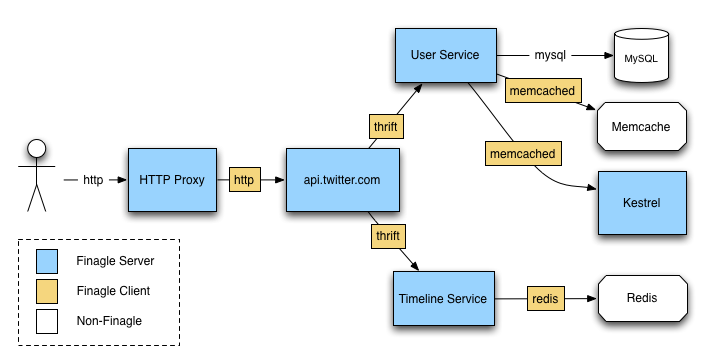
Unified Metrics
makes it easy to
understand what
you are monitorIng
(and they are always the same)
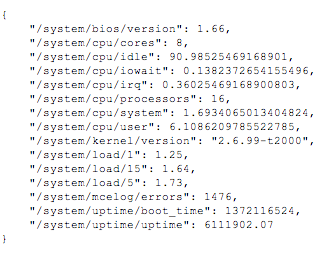
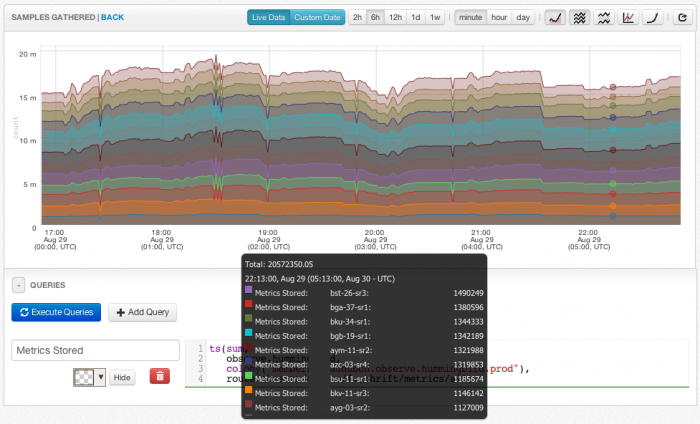
Look Pa, PErcentiles!
ZIPKIN
Trace all the things

register any finagle client/server with zipkin
val zipkinTracer = ZipkinTracer.mk("zipkin.dev.wh.plc", port = 9410, sampleRate = 1f)Distributed tracing application based on the Google Dapper paper
Trace Identifiers
- Trace ID
- Span ID
- Parent ID
Common RPC annotations
cs - client start
sr - server receive
ss - server send
cr - client receive
http://research.google.com/pubs/pub36356.html
A common Language for TRAcing
http://www.slideshare.net/johanoskarsson/zipkin-strangeloop
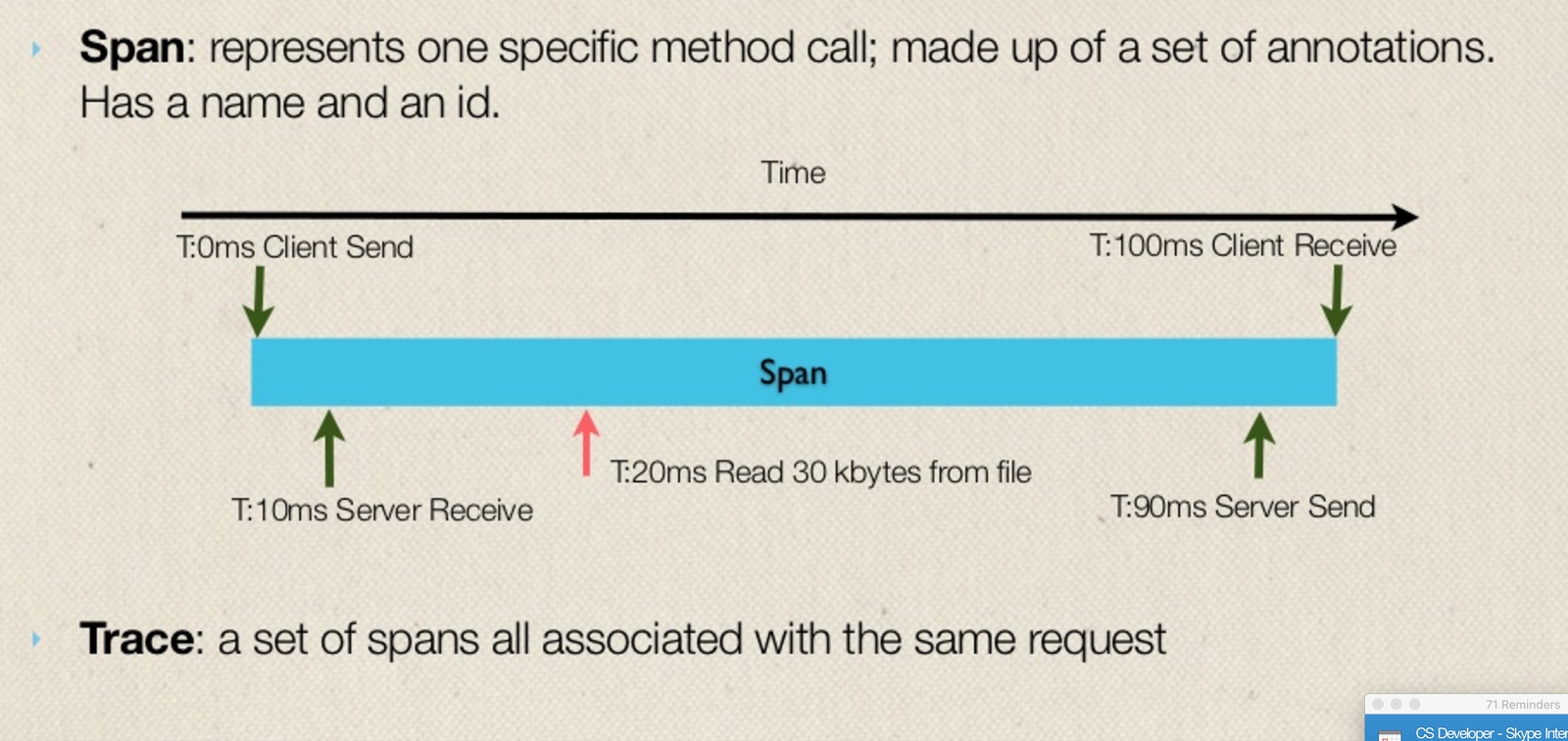
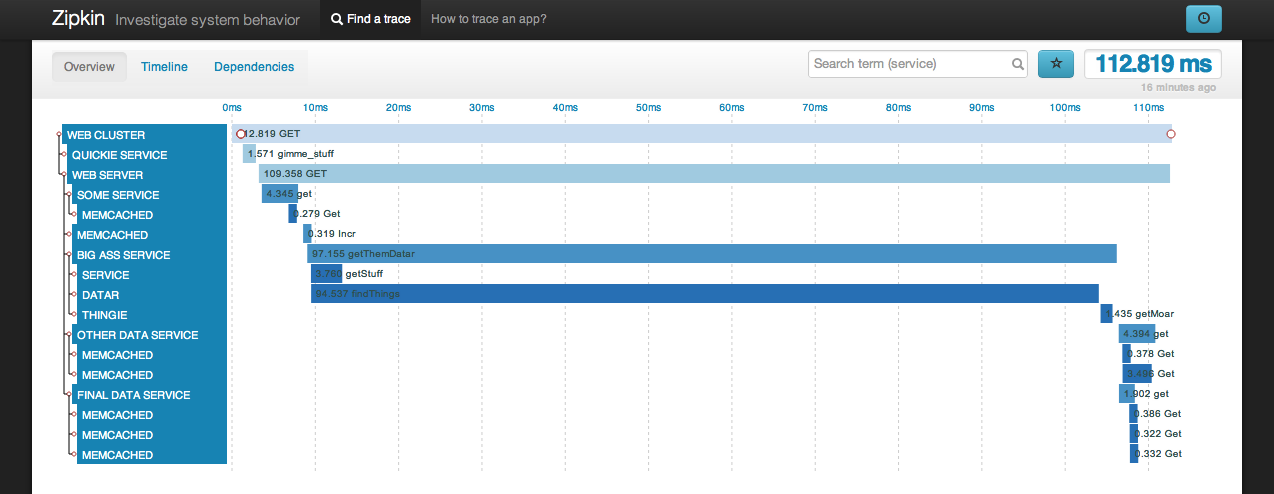
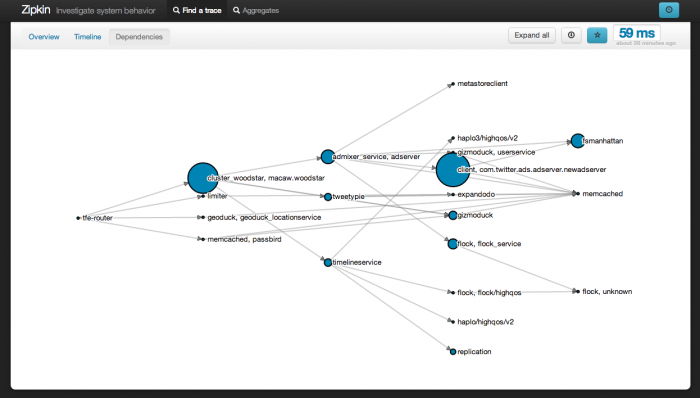
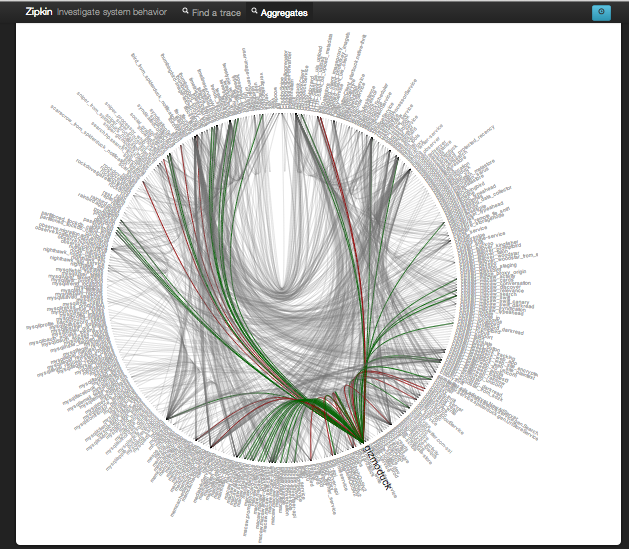
https://blog.twitter.com/2013/observability-at-twitter
https://blog.twitter.com/2013/new-tweets-per-second-record-and-how
Twitter Server
TwitterServer defines a template from which servers at Twitter are built. It provides common application components such as an administrative HTTP server, tracing, stats, etc. These features are wired in correctly for use in production at Twitter.
Features
- Flags (config)
- Logging (standard)
- Metrics exposed as JSON(standard)
- HTTP admin interface
- Lifecycle management
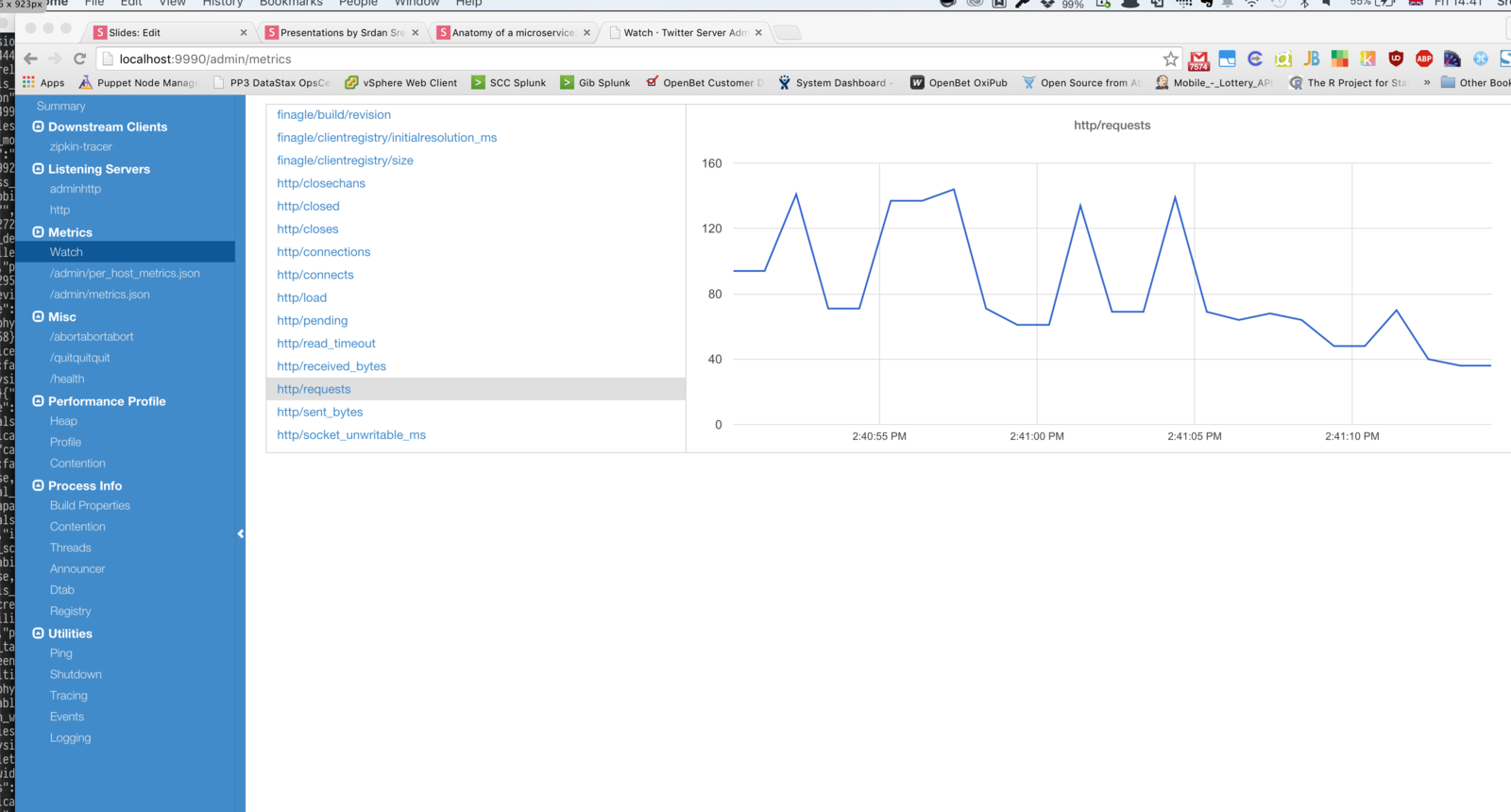
Admin console (built in)
FINATRA
Fast, testable, Scala HTTP services
Features
- Flags (config)
- Logging (standard)
- Metrics (standard)
- HTTP admin interface
- Lifecycle management
Simple Controllers
Strongly defined Request model & Validation
class Example extends Controller {
get("/") { request: Request =>
"hi"
}
}http://foo.com/users?max=10&start_date=2014-05-30TZ&verbose=true
case class UsersRequest(
@Max(100) @QueryParam max: Int,
@PastDate @QueryParam startDate: Option[DateTime],
@QueryParam verbose: Boolean = false)Dependency Injection without XML
class MyController @Inject()(dao: GroupsDAO, service: FooService) extends ControllerWARMUP+AUTOMATIC SMOKE TEST
Send custom stats to local receiver
class WurflWarmupHandler @Inject()(httpWarmup: HttpWarmup) extends Handler {
override def handle() = {
httpWarmup.send(
get("/v1/json"),
responseCallback = expectOkResponse(_)
)
}
}
class MyService @Inject()(
stats: StatsReceiver)Injection of environmental variables via flags
object MyModule1 extends TwitterModule {
val key = flag("key", "defaultkey", "The key to use.")
@Singleton
@Provides
def providesThirdPartyFoo: ThirdPartyFoo = {
new ThirdPartyFoo(key())
}
}Mustache for templated responses
FILTER CHAIN
@Mustache("foo")
case class FooView(
name: String)
get("/foo") { request: Request =>
FooView("abc")
}
get("/foo") { request: Request =>
response.notFound(
FooView("abc"))
}class Server extends HttpServer {
override configureHttp(router: HttpRouter) {
router.
filter[CommonFilters].
filter[LoggingMDCFilter].
filter[FinagleRequestScopeFilter].
filter[UserFilter].
add[MyController1].
add[MyController2]
}
}Logging trait, no boilerplate
class MyClass extends Logging {
def foo() = {
info("Calculating...")
"bar"
}
}Test framework included
import com.google.inject.Stage
import com.twitter.finatra.http.test.EmbeddedHttpServer
import com.twitter.inject.server.FeatureTest
class MyServiceStartupTests extends FeatureTest {
val server = new EmbeddedHttpServer(
stage = Stage.PRODUCTION,
twitterServer = new SampleApiServer,
extraArgs = Seq(
"-com.twitter.server.resolverMap=myservice=nil!"))
"SampleApiServer" should {
"startup" in {
server.assertHealthy()
}
}
}Access Log (same pattern as apache)
service log (application Log)
0:0:0:0:0:0:0:1 - - [16/Oct/2015:00:59:45 +0000] "GET /v1/json HTTP/1.1" 200 202 5 "curl/7.43.0" 3dad52fbec16da6a
0:0:0:0:0:0:0:1 - - [16/Oct/2015:00:59:46 +0000] "GET /v1/json HTTP/1.1" 200 202 1 "curl/7.43.0" 520d2b910eef9eea2015-10-16 02:59:26,604 INFO HttpWarmup Warmup Request("GET /v1/json", from 0.0.0.0/0.0.0.0:0) complete with Status(200)
2015-10-16 02:59:27,138 INFO DefaultTracer$ Tracer: com.twitter.finagle.zipkin.thrift.SamplingTracer
2015-10-16 02:59:27,145 INFO WurflServerMain$ http server started on port: 8888
2015-10-16 02:59:27,146 INFO WurflServerMain$ Enabling health endpoint on port 9990
2015-10-16 02:59:27,146 INFO WurflServerMain$ App started.
2015-10-16 02:59:27,147 INFO WurflServerMain$ Startup complete, server ready.
2015-10-16 02:59:45,185 INFO 3dad52fbec16da6a WurflController Entering /v1/json with curl/7.43.0
2015-10-16 02:59:45,186 DEBUG 3dad52fbec16da6a WurflServiceImpl Looking up capabilities.
2015-10-16 02:59:45,187 INFO 3dad52fbec16da6a ScientiaWurflEngine capabilities=[generic_curl_based_crawler, match=conclusive]
2015-10-16 02:59:45,187 INFO 3dad52fbec16da6a WurflController Capabilities found DeviceCapabilities(Map(device_os -> , is_wireless_device -> false, physical_screen_height -> 400, is_mobile -> false, is_tablet -> false, device_os_version -> , physical_screen_width -> 400))
2015-10-16 02:59:46,024 INFO 520d2b910eef9eea WurflController Entering /v1/json with curl/7.43.0
2015-10-16 02:59:46,024 DEBUG 520d2b910eef9eea WurflServiceImpl Looking up capabilities.
2015-10-16 02:59:46,025 INFO 520d2b910eef9eea ScientiaWurflEngine capabilities=[generic_curl_based_crawler, match=cached]
2015-10-16 02:59:46,025 INFO 520d2b910eef9eea WurflController Capabilities found DeviceCapabilities(Map(device_os -> , is_wireless_device -> false, physical_screen_height -> 400, is_mobile -> false, is_tablet -> false, device_os_version -> , physical_screen_width -> 400))
2015-10-16 02:59:46,633 INFO aa0cbfd36849d955 WurflController Entering /v1/json with curl/7.43.0
2015-10-16 02:59:46,633 DEBUG aa0cbfd36849d955 WurflServiceImpl Looking up capabilities.
2015-10-16 02:59:46,633 INFO aa0cbfd36849d955 ScientiaWurflEngine capabilities=[generic_curl_based_crawler, match=cached]
2015-10-16 02:59:46,634 INFO aa0cbfd36849d955 WurflController Capabilities found DeviceCapabilities(Map(device_os -> , is_wireless_device -> false, physical_screen_height -> 400, is_mobile -> false, is_tablet -> false, device_os_version -> , phWith MDC in the logs I can follow the requests!
UNIFICATION OF LOGS
UWURFL Customisations
Bridged the Twitter Metrics to Dropwizard metrics and then exported to JMX in order to integrate with Wily
https://github.com/rlazoti/finagle-metrics
https://dropwizard.github.io/
UWURFL Customisations
Exported Dropwizard metrics to Graphite and then Graphana (free)
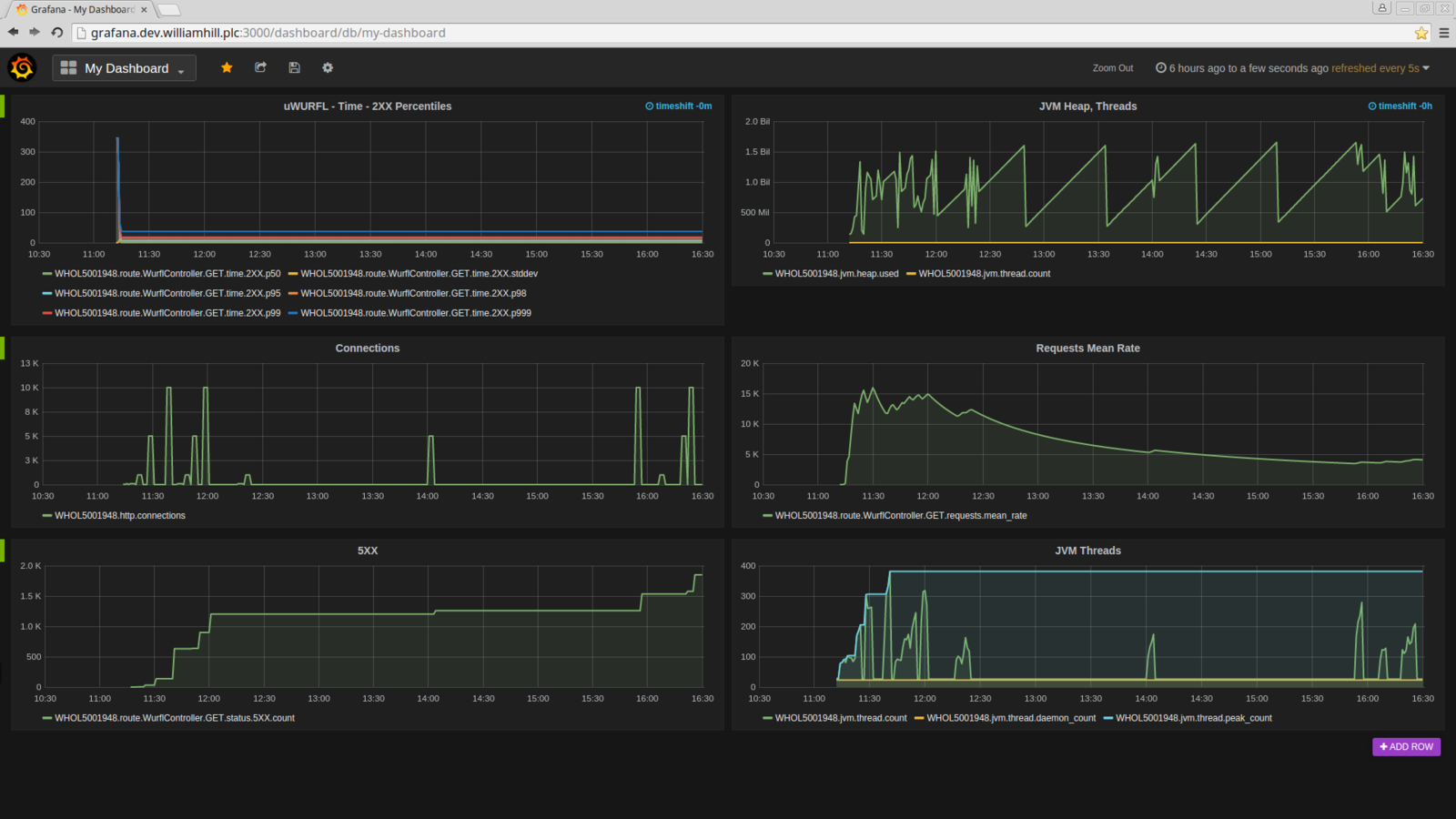
SBT-native-packager
Universal deployment
μWURFL




All of this in order to get a bit of json
curl -H "user-agent: Mozilla/5.0 (iPhone; U; CPU like Mac OS X; en) Mobile/1A543a Safari/419.3" localhost:8888/v1/json
{
"timestamp" : 1445003791106,
"capabilities" : {
"is_mobile" : true,
"device_os" : "iOS",
"device_os_version" : 1,
"is_tablet" : false,
"is_wireless_device" : true,
"physical_screen_height" : 74,
"physical_screen_width" : 50
}
}Anatomy of a Twitter microservice
By Srdan Srepfler
Anatomy of a Twitter microservice
Investigation of the Twitter microservice stack and its architectural style.
- 26,434